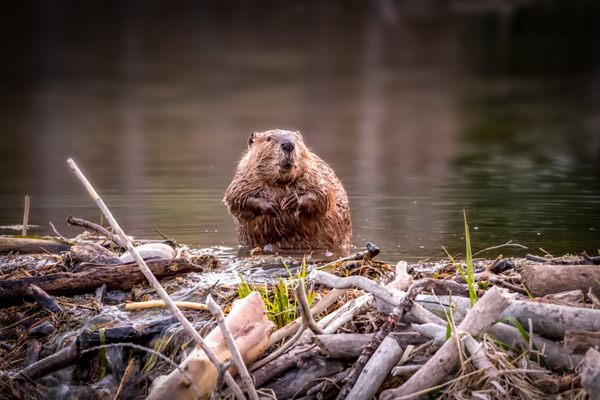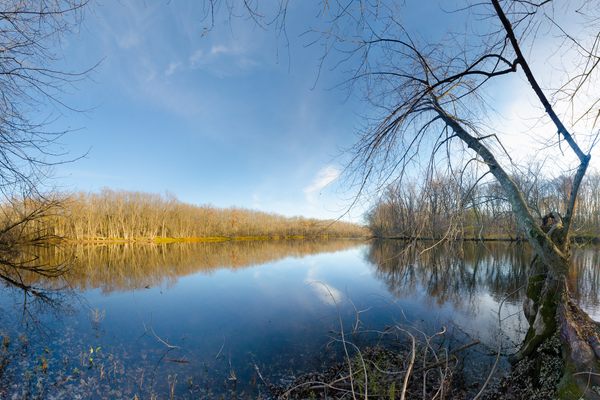India’s Cheetah Reintroduction Threatens an Indigenous Tradition
Behind the headlines of the animals’ rocky return, a displaced community struggles to access trees they have tended for generations.
In October 1998, Asmita Kabra, a young economics professor, arrived for the first time in the place that would become Kuno National Park. A dryland forest in the central Indian state of Madhya Pradesh, Kabra remembers how the monsoon that year had turned the trees so green that it hurt her eyes. In the flush of harvest, homes of the local Sahariya people overflowed with goods gathered from the forest, notably chir: a fragrant, green-yellow resin, also known as Indian frankincense, that comes from the salai tree.
Kabra expected to visit Kuno just a couple times, but the place got under her skin, she says. She grew to love its dramatic cycles of drought and abundance. After each rain, the dry brown landscape transformed into a verdant paradise. When Kabra started teaching at Ambedkar University in Delhi, she established a field course in Kuno to introduce her students to the enchanting place and its people, both little known outside Madhya Pradesh at the time.
Now, Kuno National Park is in the international spotlight for an ambitious but faltering cheetah reintroduction program. For the Sahariya, and people like Kabra and her team who support them, the current trouble is just the latest chapter in a story of displacement and resilience.
Kabra learned early after her arrival in Kuno how fully the livelihoods of the Sahariya—including their physical and mental health—depended on what they found in the forest, especially chir. Chir harvesting is a painstaking and delicate process. A curved metal blade known as saluli is used to make an incision to let the resin trickle out. “If you hit the tree hard, it will get hurt,” Leela, a 35-year-old Sahariya woman, told Sonam Mahalwal—one of Kabra’s graduate students—during her doctoral fieldwork. Chir fetches lucrative sums on the open market; traders in nearby towns buy it from people who gathered it from the forest to resell for everything from religious ceremonies to antiseptic medicines.
Salai trees grow in clusters, and Sahariya families track how much chir each tree produces to understand when a tree is stressed, so they can let the tree rest and regain its strength. “We take care of our chir, and chir takes care of us,” Susheela, another Sahariya woman, told Mahalwal.

But over the years, the community’s commitment to that tradition has been tested. When Kabra first visited Kuno a quarter-century ago, she remembers the palpable anxiety of the community. Everything was about to change. The government had asked the roughly 5,000 Sahariya villagers living inside the forest to leave: Conservationists had earmarked Kuno for the relocation of the Asiatic lion. One of India’s most endangered big cats, the lions had become isolated and inbred in a forest in West India. Establishing a second population could “save the long-term future of Asiatic lions as a subspecies,” according to Ravi Chellam, the scientist who has devoted much of his career to studying the animals. But Chellam and other experts warned that introducing lions inside Kuno—an animal no one there had seen for generations—could pose a safety threat to humans living in the area.
So the government promised fertile land, financial compensation, and, critically, access to the hospitals, schools, and other basic services that did not exist inside Kuno. Over the course of half a decade, most Sahariya villagers within the park’s boundaries abandoned their homes and carried their lives out of the forest.
The relocated communities used the same village names when reestablishing themselves outside Kuno, but everything else changed. To access their salai trees, they now had to make hours-long journeys just to reach the forest. Kabra says that relocated, formerly self-sufficient Sahariya farmers told her the supposedly fertile land was in reality “nothing but rocks,” and many were forced to turn to seasonal work as day laborers just to survive. Perhaps the final indignity: Held up by political debates for decades, the lions never arrived.
The forest remained uninhabited, though at least one relocated community attempted to move back to its former village. Ghazala Shahabuddin, a conservation biologist who has studied big cat relocations in India, says she remembers some of those displaced from the park telling her, “We can’t live outside [the forest]. There’s nothing.”
In 2022, a different large cat actually did arrive in Kuno—eight cheetahs from Namibia. Although cheetahs had historically not been documented in the lands that were now the national park, they had lived elsewhere in India, but were extirpated by the 1950s. The Namibian animals were intended to re-establish the species in the country. Their arrival coincided with new boundary walls and increased surveillance to keep out the uninvited, including Sahariya people who once called the forest home. The arduous foraging trips to family-tended clusters of salai trees have become even more difficult, with about half of the forest now in an area of Kuno completely off limits.

The Namibian cheetahs were joined by a dozen more of the cats from South Africa earlier this year, but multiple news outlets have reported on the deaths of at least eight of the animals, including three cubs. Veterinarians have attributed some of the deaths to dehydration or kidney disease, but at least two adults appeared to have died from injuries sustained in violent interactions with other animals. In late July, the Associated Press reported that at least one of the adults died from a reported infection.
The remaining cheetahs are currently being caught and examined. The deaths of the other animals, along with reports of infighting among the project’s multinational team, raise questions about whether the reintroduction program will even continue. “I don’t think it’s made the progress even the worst critics thought it would make,” Chellam says.
Amid all the international attention, Kabra and her team continue their work with the relocated Sahariya communities, helping them adjust to their new surroundings.
“I thought it would take a couple of years,” Kabra says. “It [has] ended up being decades.” Her group started a school to fill the gaps in government services; it’s now educating Sahariya children born outside of Kuno, who may have never seen the forests their families called home for generations.
To safeguard that rich past, Kabra, Mahalwal, and other researchers are gathering the traditional forest knowledge that Sahariya families have long known through recording oral histories and, when possible, walking through still-accessible areas with the people who know it best.
As the success of the ongoing cheetah reintroduction program, even its future, becomes less certain, Sahariya families hope to continue, somehow, their tradition of tending their clusters of beloved trees, rich with sustaining chir. “Our agricultural fields can betray us,” Susheela told Mahalwal, “But chir will never do the same.”



























Follow us on Twitter to get the latest on the world's hidden wonders.
Like us on Facebook to get the latest on the world's hidden wonders.
Follow us on Twitter Like us on Facebook